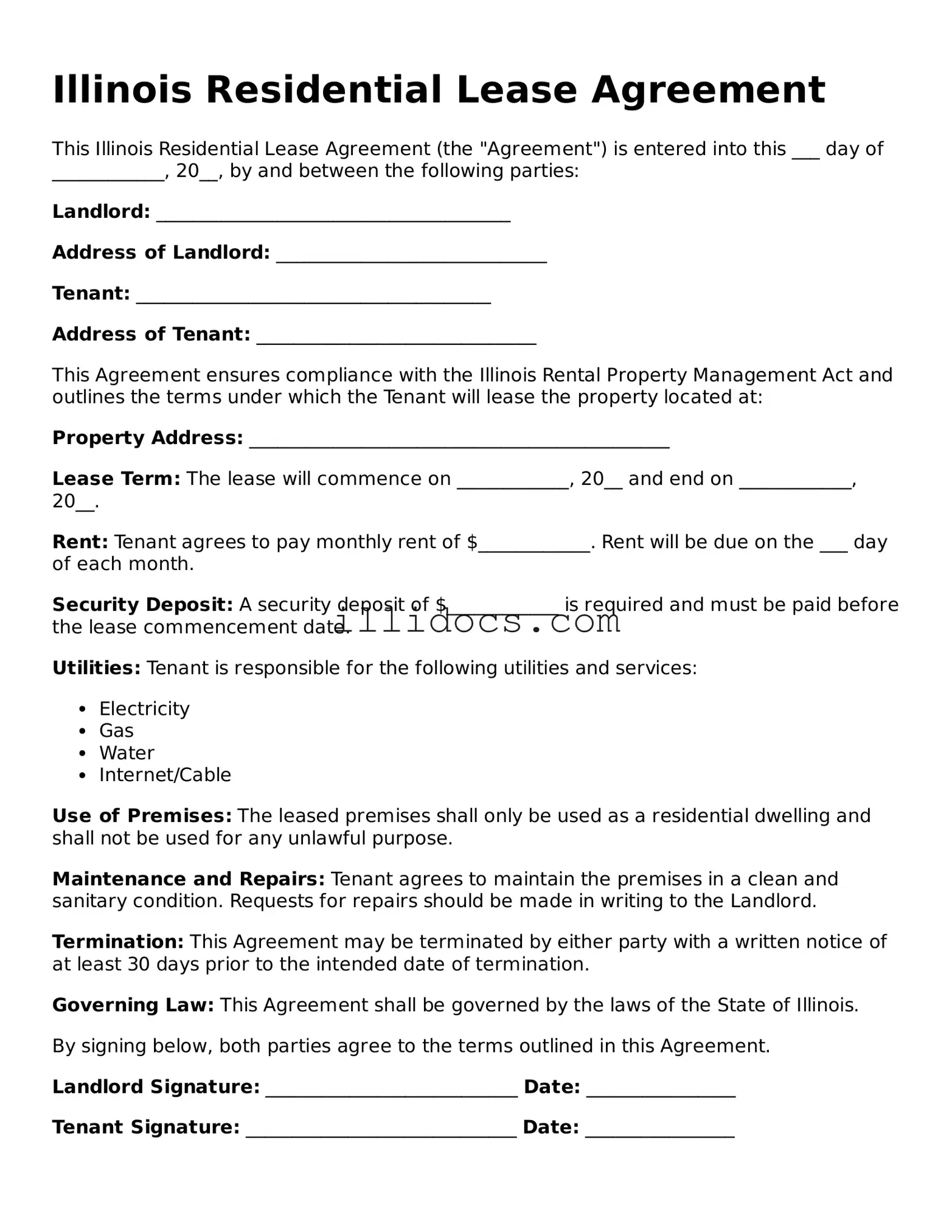What is the Illinois Residential Lease Agreement?
The Illinois Residential Lease Agreement is a legal document that outlines the terms and conditions between a landlord and tenant for renting a residential property in Illinois. It serves to protect the rights of both parties and provides clarity on responsibilities, payment terms, and other essential aspects of the rental arrangement.
What should be included in the lease agreement?
A comprehensive lease agreement should include the names of the landlord and tenant, the property address, the rental amount, payment due dates, security deposit details, lease duration, maintenance responsibilities, and any rules regarding pets or smoking. Additionally, it may outline procedures for resolving disputes and conditions for terminating the lease.
How long does a typical lease last?
Leases can vary in duration, but they commonly last for one year. However, shorter or longer terms, such as month-to-month or multi-year leases, are also possible. The length of the lease should be clearly stated in the agreement to avoid any confusion.
Can a landlord increase rent during the lease term?
Generally, a landlord cannot increase rent during the lease term unless the lease specifically allows for it. Most leases fix the rental amount for the entire duration. However, landlords may raise rent when a lease is renewed, provided they give appropriate notice to the tenant.
What is a security deposit, and how is it handled?
A security deposit is a sum of money collected by the landlord to cover potential damages or unpaid rent. In Illinois, landlords can charge up to one and a half times the monthly rent as a security deposit. Upon lease termination, the landlord must return the deposit within 45 days, minus any deductions for damages or unpaid rent, along with an itemized list of those deductions.
What happens if a tenant wants to break the lease early?
If a tenant wishes to break the lease early, they may be subject to penalties as outlined in the lease agreement. Often, tenants must provide written notice and may need to pay a fee or forfeit their security deposit. It’s advisable to communicate openly with the landlord to explore options, as some landlords may be willing to negotiate.
Are there any specific tenant rights in Illinois?
Yes, Illinois law provides tenants with several rights, including the right to a habitable living environment, the right to privacy, and the right to be free from retaliation for exercising their legal rights. Tenants should familiarize themselves with these rights to ensure they are protected throughout their rental experience.
Can a landlord evict a tenant without notice?
No, landlords cannot evict tenants without proper notice. In Illinois, landlords must follow specific legal procedures, which typically include providing a written notice that states the reason for eviction and allowing the tenant a certain period to remedy the situation or vacate the property. Eviction is a legal process that must be handled through the courts.
Is it necessary to have a written lease agreement?
While verbal agreements can be legally binding, having a written lease agreement is highly recommended. A written document provides clear evidence of the terms agreed upon and helps prevent misunderstandings. It also serves as a reference point for both parties throughout the rental period.
What should I do if I have a dispute with my landlord?
If a dispute arises with your landlord, the first step is to communicate directly and attempt to resolve the issue amicably. If that doesn’t work, you may consider mediation or contacting local tenant advocacy groups for assistance. If the situation escalates, legal action may be necessary, but it’s best to explore all options first.
